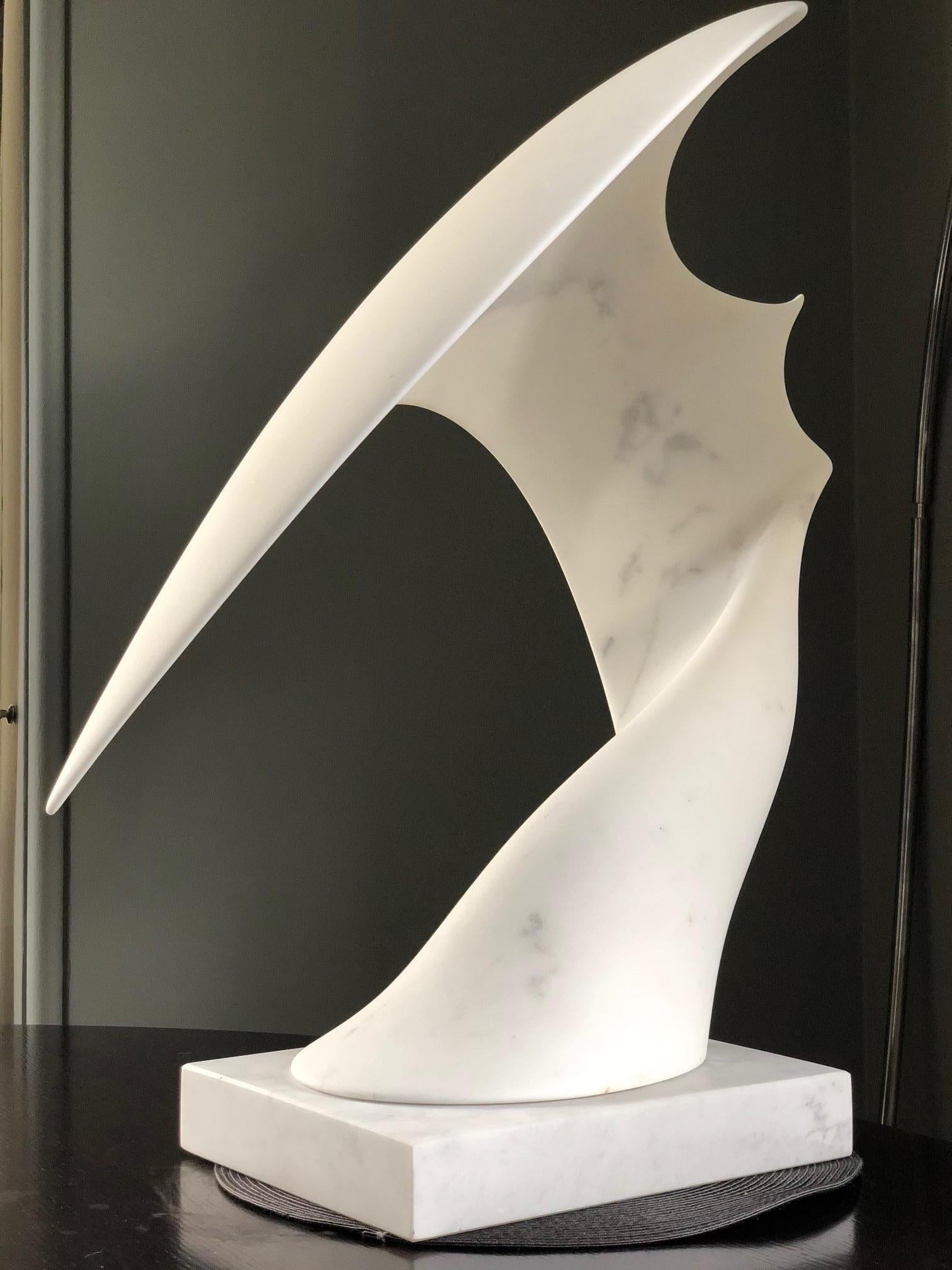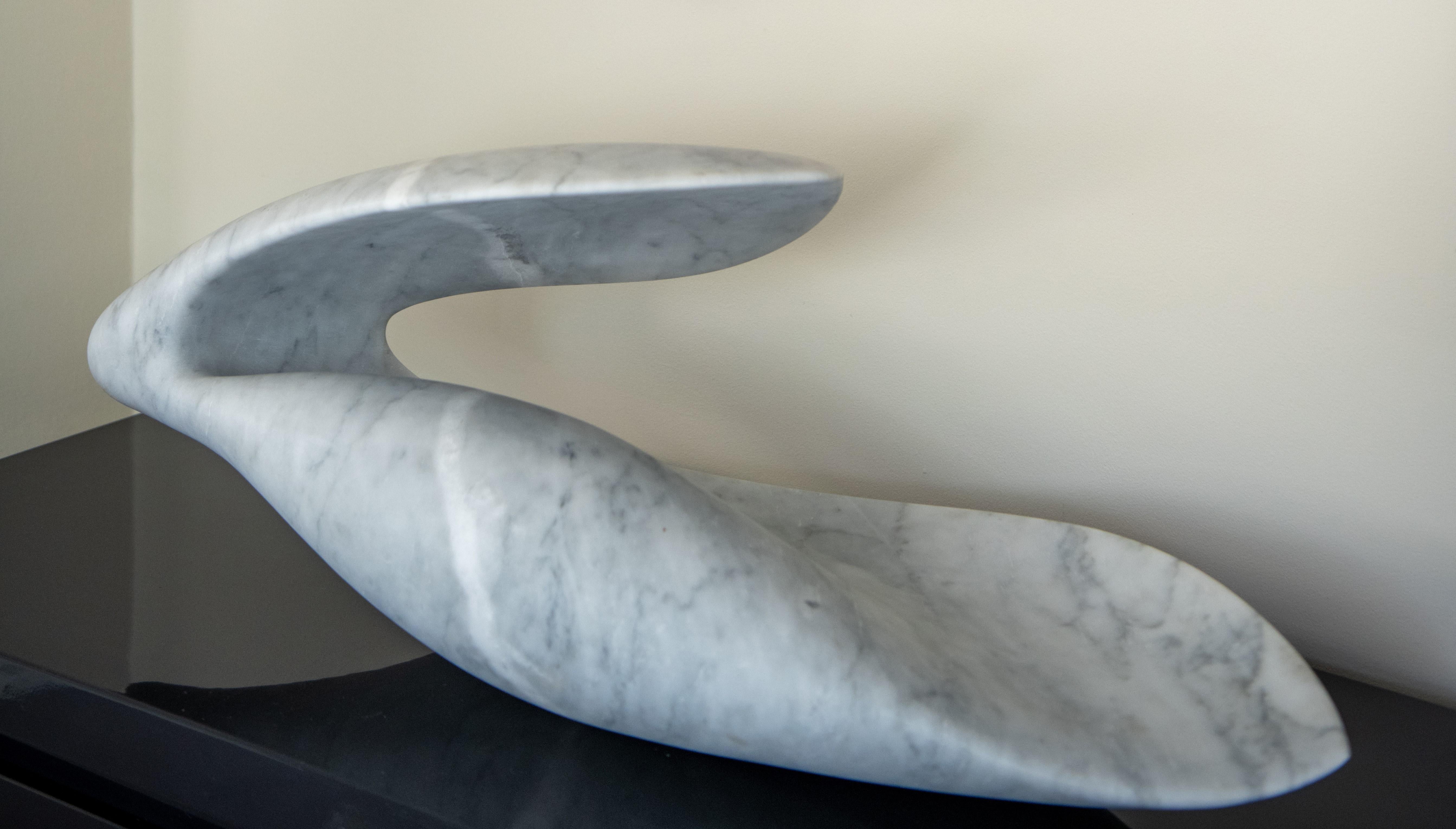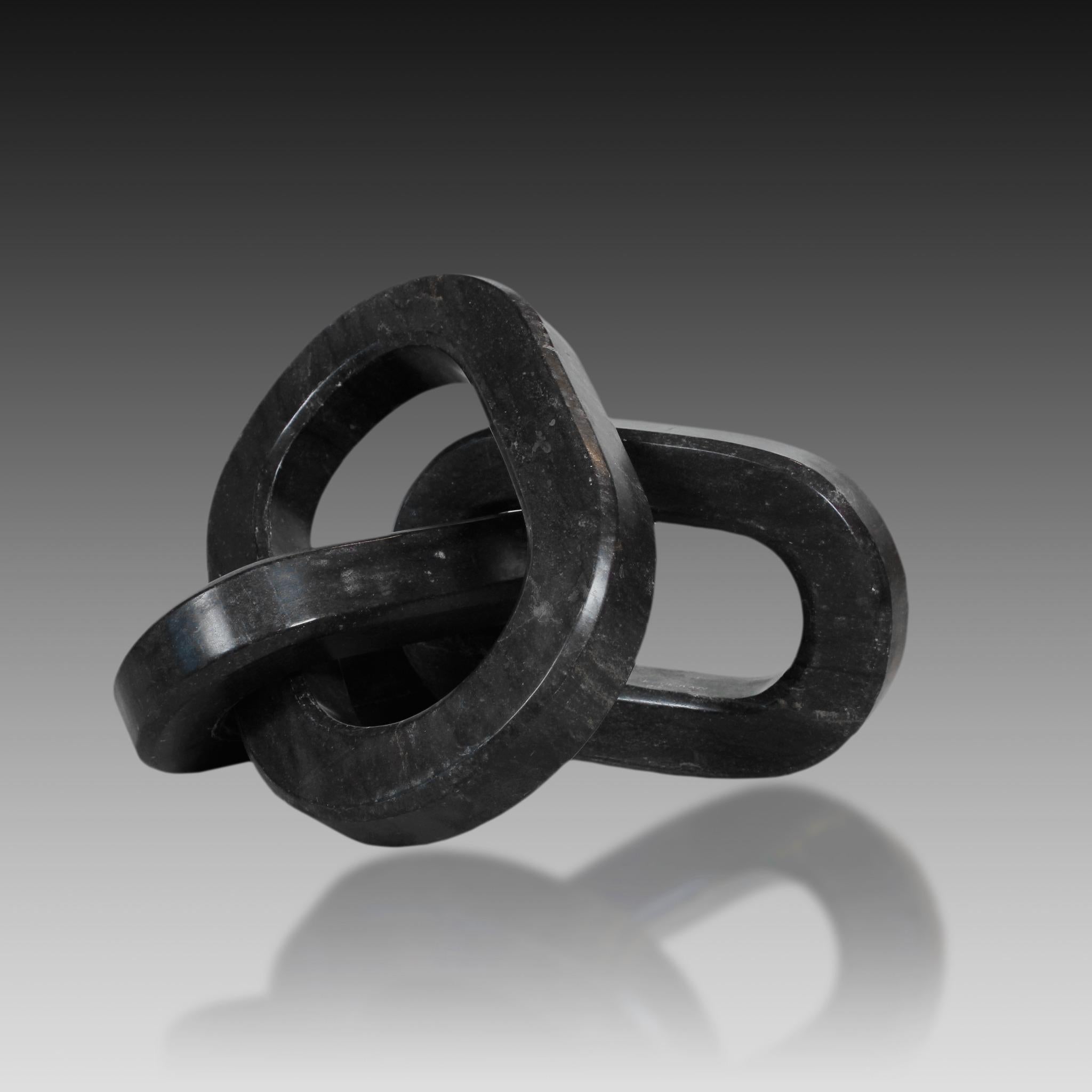Items Similar to Glacier
Want more images or videos?
Request additional images or videos from the seller
1 of 8
Émile GilioliGlacier1961
1961
About the Item
"The Glacier"
by Emile GILIOLI (1911-1977)
"Perlino rosato" polished marble
signed to underside "Gilioli"
and dated "61"
France
1961
height 27 cm
width 29 cm
depth 20 cm
Provenance :
World House Galleries, New York, 1962;
Joseph H. Hirshhorn, New York, 1962-1966;
Donation to the Hirshhorn Museum and Sculpture Garden, Washington;
Christie's, sold by order of the trustees of the Hirshhorn Museum, 1994.
Biography :
Émile Gilioli (1911-1977) was a French sculptor. He was one of the leaders of French post-war abstract sculpture, alongside Brancusi and Arp. Born into a family of Italian shoemakers living in Paris, they moved to Nice after the World War I. In 1932, Émile Gilioli took lessons at the School of Decorative Arts in Nice, notably with the future artist Marie Raymond. During World War II, Gilioli was mobilized in Grenoble where he spent the remainder of the war. He met Andry Farcy, curator of the Grenoble Museum of Fine Arts, and introduced him to cubism.
After the war, Émile Gilioli moved to Saint-Martin-de-la-Cluze, near Grenoble, where he sculpted in his workshop. His art was associated in a way with facts of the French Resistance. In 1947, he exhibited at the Salon des ‘Réalités Nouvelles’ in Paris. In 1949, he participated in the first Salon de la ‘Jeune sculpture’ in the garden and the chapel of the Rodin museum in Paris. The first salon hosted 63 sculptors including Émile Gilioli, Emmanuel Auricoste, Étienne Hajdu, Baltasar Lobo and Berto Lardera.
From 1954, Gilioli took part in group exhibitions with other artists. In 1956, he moved to Vaugirard, a district where many artists then resided. In 1971, he created four sets for limited edition plates at the Manufacture nationale de Sèvres. In 1997, for the twentieth anniversary of his death, the municipality of Saint-Martin-de-la-Cluze decided to acquire the house and workshop of Émile Gilioli, thus responding to the wishes expressed by Babet Gilioli, his wife, to create a place in memory of the artist.
- Creator:Émile Gilioli (1911 - 1977, French)
- Creation Year:1961
- Dimensions:Height: 10.63 in (27 cm)Width: 11.42 in (29 cm)Depth: 7.88 in (20 cm)
- Medium:
- Movement & Style:
- Period:
- Condition:
- Gallery Location:PARIS, FR
- Reference Number:

About the Seller
5.0
Vetted Seller
These experienced sellers undergo a comprehensive evaluation by our team of in-house experts.
Established in 1992
1stDibs seller since 2023
Typical response time: 1 to 2 days
- ShippingRetrieving quote...Ships From: PARIS, France
- Return PolicyA return for this item may be initiated within 3 days of delivery.
More From This SellerView All
- Daytime, marble sculptureLocated in PARIS, FR"Daytime" by James PRADIER (1790-1852) Rare sculpture made in white Carrara marble France circa 1840 height 100 cm diameter of base 29 cm Listed in "Catalogue raisonné, James Pradi...Category
1840s Academic Nude Sculptures
MaterialsMarble
- Panthers restingLocated in PARIS, FR"Panthers resting" by Maximilien FIOT (1886-1953) Outstanding and rare sculpture in white marble France circa 1930 height 40 cm length 66 cm Provenance : By Descent of the Boardman, Devitt and Dawkins families, New England and California. Biography : Louis-Maximilien Fiot, known as Maximilien Fiot (1886-1953) was a French sculptor. Student of the sculptor Prosper Lecourtier, he exhibited at the Paris Salon from 1910 to 1914. Member of the Salon of French Artists, Fiot obtained a third medal in 1911, then a second medal in 1913. As an animal artist, he also participated during the period between the two World Wars, like many of his confreres, in the production of war memorials. In 1930, he realized for the city of La Ferté-Alais, where his mother lived, "The Lion watching...Category
1930s Art Deco Figurative Sculptures
MaterialsMarble
- BatherLocated in PARIS, FRBather by Etienne Hachenburger (19th-20th C.) Sculpture in white Carrara marble Signed on the side of the base "E. Hachenburger" A simiilar model was exhibited at the Paris Salon oh...Category
Early 1900s French School Nude Sculptures
MaterialsMarble
- The SpringBy Albert-Ernest Carrier-BelleuseLocated in PARIS, FRThe Spring by Albert-Ernest CARRIER-BELLEUSE (1824-1887) Sculpture made in white Carrara marble signed on the base "A. Carrier-Belleuse" France circa 1870 height 76,5 cm width 30 cm depth 24 cm Biography : Albert-Ernest Carrier de Belleuse known as Carrier-Belleuse (1824-1887) was one of the most prolific artists of the century and had the greatest successes under the Second Empire, enjoying the personal support of Napoleon III. His work was greatly influenced by the style of the Italian Renaissance and that of the 18th century, which he helped to bring up to date. In 1837, the young Carrier-Belleuse apprenticed in the workshop of the engraver Bauchery. He was admitted soon after to the goldsmith Jacques Henri Fauconnier. Through François Arago, he met the sculptor David d'Angers who facilitated his admission to the School of Fine Arts. Carrier-Belleuse entered it in 1840. Noted for his skill by the great bronze companies in Paris such as Barbedienne and Denière, he soon received numerous orders for models for candelabras, pendulums, fittings for fireplaces, etc. In 1848, probably at the initiative of François Arago, who became head of state, he received his first public order for a small statue of "Mademoiselle Rachel singing La Marseillaise". In 1851, he appeared for the first time at the Salon of French Artists, where he presented two bronze medallions. From 1851 to 1855, Carrier-Belleuse stayed in England, in Stoke-on-Trent where he served as director of the modeling and drawing school of the Minton house, a large porcelain manufacturer. Back in France, Carrier-Belleuse moved to Paris in a large workshop located 15 rue de la Tour d´Auvergne. From 1857, he made regular sendings to the Salon and became famous thanks to the success of large marbles, such as the "Bacchante" exhibited at the Salon in 1863, and acquired by Napoleon III, "Angelica" (1866) or even "Hebe asleep" (1869). At the Salon of 1867, his group entitled "Messiah" earned him the medal of honor of sculpture. It was acquired by the State to adorn the Chapel of the Virgin in the Saint-Vincent-de-Paul church. Carrier-Belleuse acquired a great reputation in parallel for his terracotta busts which, in many respects, recall those of 18th century artists. He made portraits of a large number of celebrities of his time. He produced, among others, the busts of Napoleon III, Renan, Thiers, Grévy, Arago, Marguerite Bellanger, Théophile Gautier, Honoré Daumier, Delacroix, Hortense Schneider, Réjane… He also modelled numerous busts of mythological inspiration and historical and artistic portraits like Marie Stuart, Shakespeare or even Mozart. Carrier-Belleuse used and trained in his workshop in the rue de la Tour d´Auvergne many young talented artists such as Alexandre Falguière, Jules Desbois, Eugène Delaplanche, Jules Dalou or Joseph Chéret; but he was best known for having been the master of Auguste Rodin who entered his studio as a practitioner in 1864. Carrier-Belleuse devoted himself a lot to decorative sculpture. He contributed to the decorations of many important buildings. We owe him in particular the caryatids of the Renaissance theater in Paris, the pediment of the main entrance to the Banque de France, the stucco ceilings of the Lesdiguières and La Trémoïlle pavilions at the Louvre Palace, the frieze of the Palais de la Bourse in Brussels, or the decoration of the Hôtel de la Païva on the Champs-Elysées in Paris. He also received State commissions for monuments: that of Jean-Jacques Rousseau in Montmorency, of Alexandre Dumas, in Villers-Cotterêts, of Masséna in Nice. Abroad, he produced the equestrian statue of Michael the brave in Bucharest and the tomb of José de San Martín in Buenos Aires. In 1873, Carrier-Belleuse took part in the construction of the Paris Opera house, directed by his friend Charles Garnier. He created the two monumental torchieres...Category
1870s French School Figurative Sculptures
MaterialsMarble
- Lady with a bookLocated in PARIS, FR"Lady with a book" also known as "St. Suzanne" by Jan & Joël MARTEL (1896-1966) Sculpture in stone from Euville France circa 1935 height of the sculpture : 125 cm width of base : 25,4 x 21,2 cm total height with wooden base : 141 cm width of the wooden socle : 31 x 26 cm A similar model is reproduced in "Joël et Jan Martel, sculpteurs, 1896-1966", Ed. Gallimard Electa, 1996, page 150. Biography : The twins Jan and Joël Martel, born March 5, 1896 in Nantes and died respectively on March 16 and September 25, 1966 in Bois-de-Céné, were both of them French sculptors and decorators. As Parisian artists, they spent long moments in Vendée region, in their Mollin property, or in Saint-Jean-de-Monts, city in which one can see their last monumental work: "The Sea Birds". Their works were sculptures, monuments or fountains of Art Deco or Cubist inspiration. They also realized around 1920 interior fittings for villas. Jan and Joel Martel shared the same workshop and their work to the point of signing their compositions only by "Martel". The Martel brothers...Category
1930s Art Deco Figurative Sculptures
MaterialsLimestone
- Hay PickerBy Aimé-Jules DalouLocated in PARIS, FRThis Peasant resting is a subject that is included in the famous suite commonly called "little workers" by Jules Dalou (1838-1902) Bronze with nuanced dark brown patina cast by Susse Frères - stamped with the founder's seal France created around 1890 and cast after his death height 12,5 cm A similar model reproduced inJules Dalou, le sculpteur de la République, Exhibition held at the Musée du Petit Palais, Paris, 2013, page 288, n°220. Biography : Aimé-Jules Dalou, said Jules Dalou (1838-1902) was a French sculptor, born from Protestants glovers craftsmen who raised in secularism and love of the Republic. Jules Dalou was very young talented for modeling and drawing, which earned him the attention of Jean-Baptiste Carpeaux, who made him entered in 1852 in the Little School, the future National School of Decorative Arts in Paris. In 1854, he was admitted to the School of Fine Arts in Paris, where he studied painting in the workshop of Abel de Pujol and sculpture in the workshop of Francisque Duret...Category
Late 19th Century French School Figurative Sculptures
MaterialsBronze
You May Also Like
- Nebza II Sculpture by Camilo Andres Rodriguez Marquez a.k.a CarmWorksBy Camilo Andres Rodriguez MarquezLocated in Paris, FRNebza II by Camilo Andres Rodriguez Marquez Iranian Pink Marble Dimensions: H. 10.5 cm x 33 cm x 4 cm Camilo Andres Rodriguez Marquez is a Colombian born designer with a degree in...Category
21st Century and Contemporary Abstract Geometric Abstract Sculptures
MaterialsMarble
- Transformation, British Sculptor, Abstract, Marble, Italian Carrara, PhilosophyLocated in Knowle Lane, CranleighTransformation by British sculptor Ian Thomson. Thomson's travels have provided inspiration for his work. He holds degrees in Architecture and Philosophy &...Category
2010s Abstract Abstract Sculptures
MaterialsMarble
- Earth - British Sculptor, Abstract, Marble, Italian Carrara, Philosophy, FigureLocated in Knowle Lane, CranleighEarth by British sculptor Ian Thomson. Thomson's travels have provided inspiration for his work. He holds degrees in Architecture and Philosophy & describe...Category
2010s Abstract Abstract Sculptures
MaterialsMarble
- Becoming -British Sculptor, Abstract, Marble, Italian Carrara, Philosophy, veinsLocated in Knowle Lane, CranleighBecoming by British sculptor Ian Thomson. Thomson's travels have provided inspiration for his work. He holds degrees in Architecture and Philosophy & descr...Category
2010s Abstract Abstract Sculptures
MaterialsMarble
- Cloud - British Sculptor, Abstract, Marble, Italian Carrara, Philosophy, veiningLocated in Knowle Lane, CranleighCloud by British sculptor Ian Thomson has been created using Colonnata Marble, Grigio Nuvolato. Thomson's travels have provided inspiration for his work. H...Category
2010s Abstract Abstract Sculptures
MaterialsMarble
- Black Marble “LIAISON” with 3 links, Hand Carved Marble SculptureBy Cedric KoukjianLocated in Montreux, CHA black marble “liaison” with 3 links. Hand carved from a single block of marble. 78 x 30 x 23 cm signed Cedric Koukjian 2019 Switzerland Cedric Ko...Category
2010s Abstract Geometric Abstract Sculptures
MaterialsMarble




